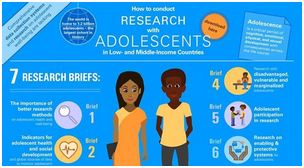WHO issues new guidance on tobacco product regulation
Извор: Светска здравствена организација – 09.03.2018
9 March 2018 – Many countries have developed advanced policies to reduce the demand for tobacco, which kills over 7 million people annually, but governments can do much more to implement regulations to control tobacco use, especially by exploiting tobacco product regulation. WHO has launched new guidance on the role tobacco product regulation can play to reduce tobacco demand, save lives and raise revenues for health services to treat tobacco-related disease, in the context of comprehensive tobacco control.
WHO issues new guidance on tobacco product regulation towards maximum protection of public health
News release
9 MARCH 2018 – CAPE TOWN: WHO has launched new guidance on the role tobacco product regulation can play to reduce tobacco demand, save lives and raise revenues for health services to treat tobacco-related disease, in the context of comprehensive tobacco control.
A new guide, “Tobacco product regulation: Building laboratory testing capacity”, and a collection of country approaches to regulation of menthol, presented in the publication titled “Case studies for regulatory approaches to tobacco products – Menthol in tobacco products” have been launched at the 2018 World Conference on Tobacco or Health in Cape Town, South Africa.
Many countries have developed advanced policies to reduce the demand for tobacco, which kills over 7 million people annually, but governments can do much more to implement regulations to control tobacco use, especially by exploiting tobacco product regulation.
Dr Douglas Bettcher, WHO’s Director of the Department for the Prevention and Control of Noncommunicable diseases (NCDs), said “The WHO Framework Convention on Tobacco Control (WHO FCTC), a global treaty established under the auspices of the WHO to combat the tobacco epidemic, has played a critical role in tobacco control. The launch of these important publications will further aid the implementation of Articles 9 and 10 of the WHO FCTC, contributing to building tobacco product regulation capacity in WHO Member States”.
He further said “Tobacco product regulation is an under-utilized tool which has a critical role to play in reducing tobacco use. The tobacco industry has enjoyed years of little or no regulation, mainly due to the complexity of tobacco product regulation and lack of appropriate guidance in this area. These new tools provide a useful resource to countries to either introduce or improve existing tobacco product regulation provisions and end the tobacco industry ‘reign’.”
“Only a handful of countries currently regulate the contents, design features and emissions of tobacco products,” says Dr Bettcher. “This means that tobacco products are one of the few openly available consumer products that are virtually unregulated in terms of contents, design features and emissions.”
Most countries hesitate to implement policies, due in part to the highly technical nature of such policy interventions and the difficulties in translating science into regulation, explains Dr Vinayak Prasad, who leads WHO’s Tobacco Free Initiative.
“Failure to regulate represents a missed opportunity as tobacco product regulation, in the context of comprehensive control, is a valuable tool that complements other tried and tested tobacco control interventions, such as raising taxes, and ensuring smoke-free environments,” adds Dr Prasad.
“Tobacco product regulation: Building laboratory testing capacity” provides practical, stepwise approaches to implementing tobacco testing. Such guidance is relevant to a wide range of countries in various settings, including those with inadequate resources to establish a testing facility. This laboratory guide is a useful resource for countries, and provides regulators and policymakers with comprehensible information on how to test tobacco products, what products to test, and how to use testing data in a meaningful way to support regulation.
Further, it provides a step-by-step guide to developing a testing laboratory, using an existing internal laboratory, contracting an external laboratory, and making use of the available support mechanisms both within WHO and externally. This calls for country prioritization and commitment of resources to tobacco product regulation, as the guide equips regulators with the necessary tools to strengthen tobacco regulation capacity, especially in relation to Article 9 of the WHO FCTC.
The publication “Case studies for regulatory approaches to tobacco products – Menthol in tobacco products” complements the 2016 advisory note on menthol published by the WHO Study Group on Tobacco Product Regulation, which set out the available evidence on prevalence and health effects of menthol in tobacco products, as well as evidence-based conclusions and recommendations for policy-makers and regulators on menthol in its various forms.
The case studies provide practical guidance and policy options to countries about effective regulatory strategies in tobacco product regulation. This includes lessons learned and challenges encountered in developing and implementing menthol related regulation. To date, regulators have adopted multiple approaches to restricting the use of menthol. These include a ban in some product categories, a total ban on the use of all flavours and a ban on all products with a perceived menthol flavour. This publication also provides useful information on the merits and drawbacks of various regulatory approaches.



